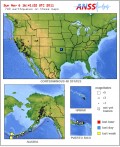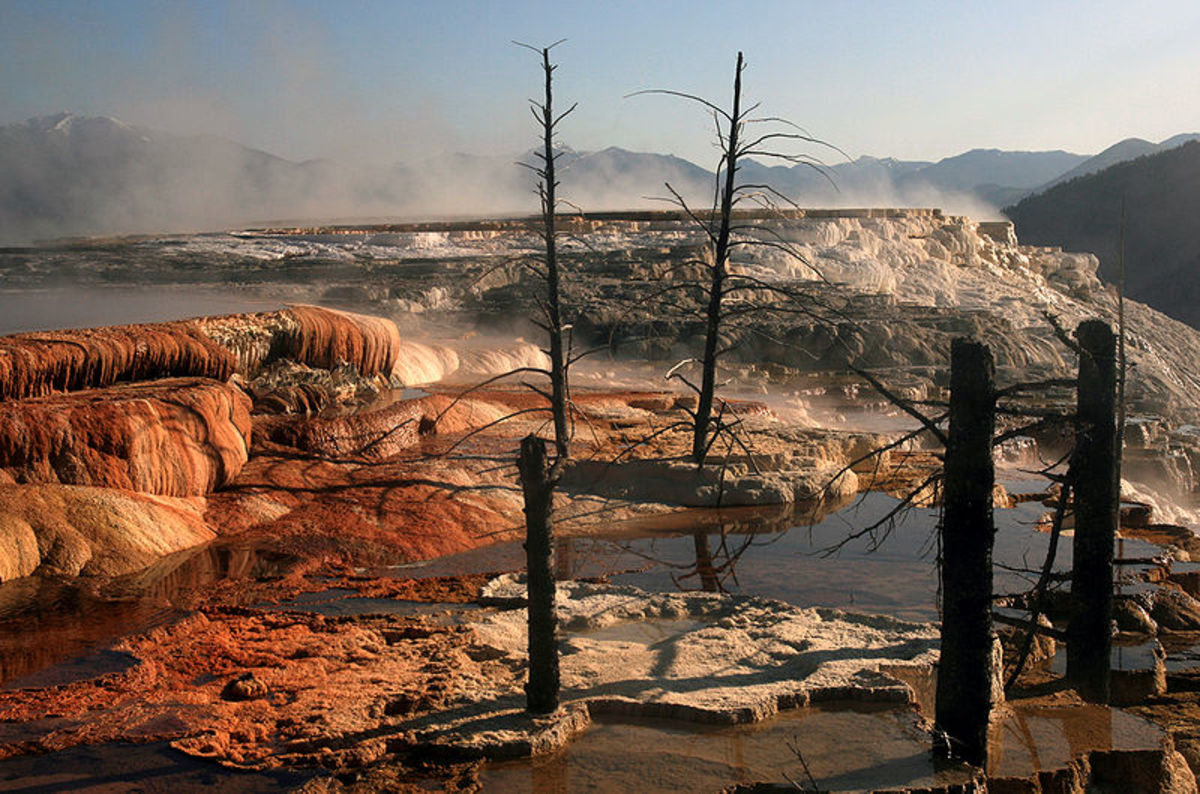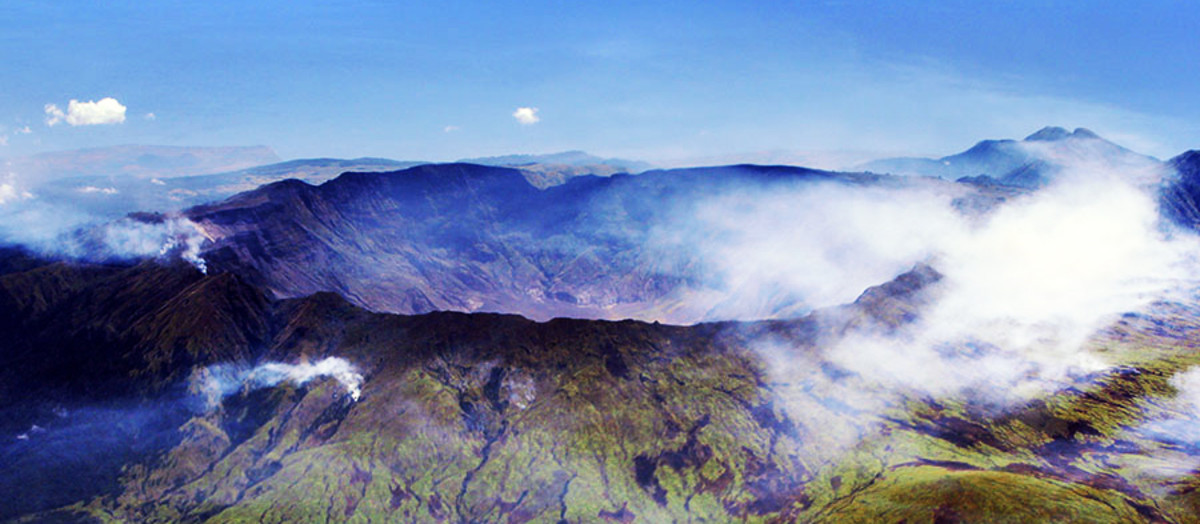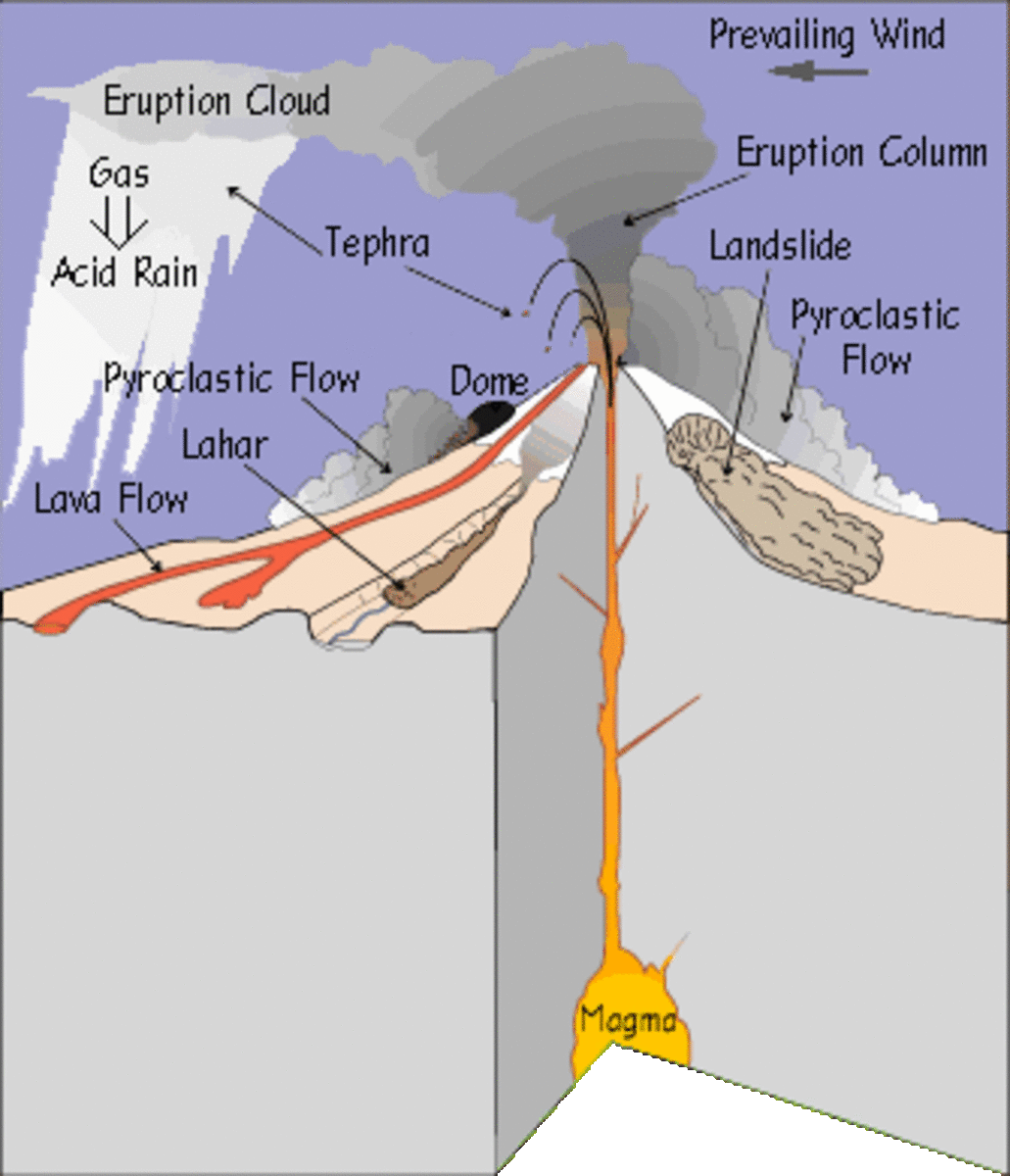Earthquake Weather Forecast for December 2015
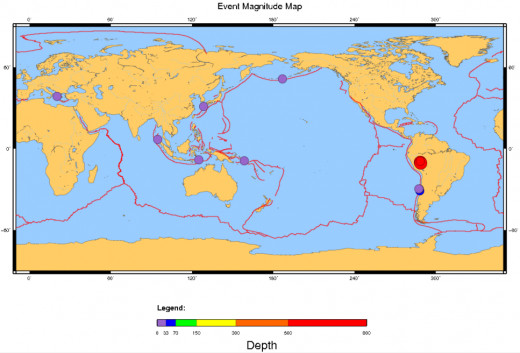
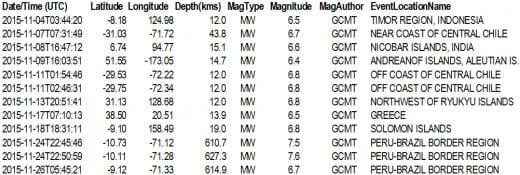
In my last earthquake related hub, I said that a window centered at 0300 UTC on 12 November (give or take 2.5 days) would likely be an exception to the rule, with a 75% chance of at least one 6.8 magnitude or larger earthquake occurring during that time. What happened was that three earthquakes that just happened to be 6.8 in magnitude occurred during that time. The first two were within an hour of each other and were aftershocks of the 8.25 magnitude Chile earthquake which happened 8 weeks prior (on 16 September). Although these were technically aftershocks, they were unusual in both how they occurred one right after the other, were of the same magnitude and, for their size, occurred with more of a delay (following the main shock) than would be considered typical. So they were exceptional but, since they were aftershocks, I am not using them to rank how I did in the month of November 2015. Chile was also fourth on my list of countries that were potential locations for epicenters of significant earthquakes.
But there were other noteworthy quakes in a month that was busier than I had expected (more on that in a bit). Before that 5 day window closed, there was another 6.8 magnitude quake, occurring in the ocean off the south of Japan. On 18 November, there was again another 6.8 magnitude earthquake, that time centered in the Solomon Islands (north of Australia). That one however was outside of my astrologically derived seismic windows.
Following those quakes, there was the largest one of the month, a 7.5 magnitude event occurring in Peru. Besides being a very deep quake which rendered it harmless on the surface of the earth, it too was unusual in that a 7.6 magnitude quake followed it 5m15s later. Both quakes were placed squarely within a 3.25 day seismic window that I had given a 50% probability of a significant seismic event occurring within its boundaries. During November 2015, my windows occupied approximately one third of the month and there were twice as many significant events inside of those windows than outside (when a typical random distribution would place twice as many outside of them instead). In other words, there were 100% more earthquakes inside the window than one would normally expect (and that is without counting the Chilean aftershocks or the second 7.6 magnitude shock in Peru).
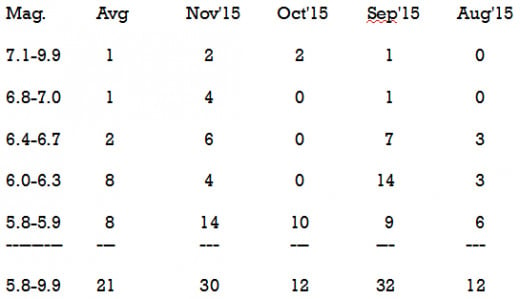
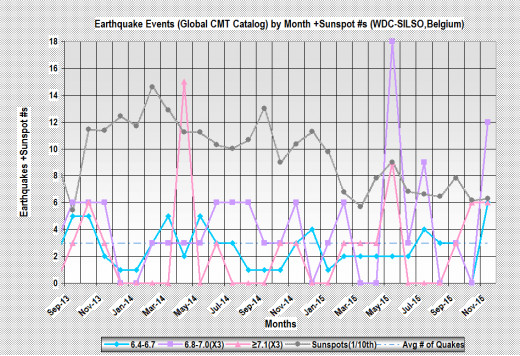
However, one thing I said in my last hub has yet to materialize. After the 8.25 magnitude earthquake in Chile in September 2015, worldwide significant seismic activity dried up. It wasn't until the 26 October 2015 earthquake of 7.5 magnitude which occurred near the Afghanistan/Pakistan border that things changed. Like the weeks following the 8.15 magnitude Chile quake in early April 2014 and the 7.85 magnitude Nepal quake of 25 April 2015, significant worldwide seismic events became much more numerous. Also, similar to what happened after the Nepal earthquake (a 7.8 magnitude very deep earthquake in the oceans southeast of Japan late in May 2015), the sequence of increased activity ended with a quake of similar size to the first earthquake in the series (the very deep earthquakes of 7.5 and 7.6 on 24 November, 2015).
Putting things more simply, because activity didn't pick up after an 8.25 magnitude event on 16 September, or not until after a 7.5 magnitude quake occurred on 26 October 2015 (beginning with a 6.5 magnitude shock in the Timor region on 4 November 2015) I had estimated that a long period of less frequent significant activity was in the offing. It may still be that such will be the case, but it didn't begin in November 2015.
But since it looks like the large sized double deep shocks under the Peru/Brazil border may have signaled an end to a flurry of seismic activity worldwide, December, unlike the above normal activity we just experienced, could see less activity than usual. On the other hand, there are some potential dates for 6.8 magnitude or greater earthquakes in December 2015, and below I list the likely dates and locations for any that may take place. The windows this time occupy 56.45% of the time (17.5 days) during the month of December 2015. I have tried to put the list of likely epicenter locations in order from the most likely to the least likely potential countries (or states/cities in the United States) and am also including times and dates of peaks in Astro-aspect values (besides the date and time ranges) and also a probability percentage rating for each window.
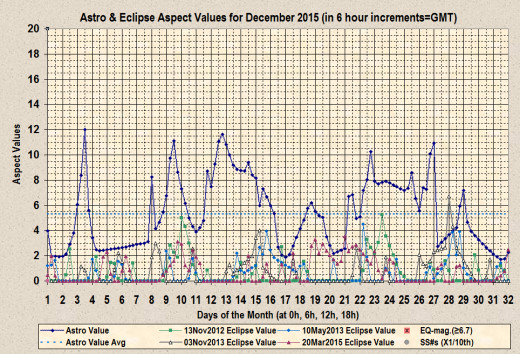
2015-12/02, 2100UT – 12/03, 2300UT (26hrs), peaks 12/3, 1222UT (value=12.67) 28-30% (normal=7%); Iran, Papua New Guinea, Solomon Islands, Kamchatka, Alaska, Los Angeles.
2015-12/08, 1500UT – 12/10, 1500UT (48hrs), peaks 12/09, 0947UT (value=11.72) 30% (normal=10%); Iran, Iraq, Papua New Guinea, Solomon Islands, India, Pakistan, Greece, Peru, Los Angeles.
2015-12/11, 1000UT – 12/14, 1800UT (80hrs), peaks 12/12, 1810UT (value=11.63) 55% (normal=22%); Iran, Papua New Guinea, Solomon Islands, Sumatra, Kamchatka, Los Angeles.
2015-12/14, 1800UT – 12/16, 1600UT (46hrs), peaks 12/15, 1200UT (value=7.31) 22% (normal=12.6%); Kamchatka, Aleutian Islands, Chile, Peru, Colombia, Mexico, Dominican Republic, north of New Zealand.
2015-12/18, 0700UT – 12/19, 1600UT (33hrs), peaks 12/18, 1800UT (value=6.21) 18% (normal=9%); Nepal, India, China, Bangladesh, Sumatra, Iran, Iceland.
2015-12/21, 0100UT – 12/21, 2100UT (20hrs), peaks 12/21, 1015UT (value=8.79) 11% (normal=5.5%); same locations as last window.
2015-12/21, 2100UT – 12/27, 0800UT (5d11h), peaks 12/22, 1810UT (value=13.2), peaks 12/23, 1800UT (value=7.92), peaks 12/25, 1200UT (value=8.6), peaks 12/27, 0020UT (value=11.43) 80% (normal=36%); Papua New Guinea, Solomon Islands, Kamchatka, Aleutian Islands, Mexico, north of New Zealand, Mongolia, China, Los Angeles.
2015-12/27, 1800UT – 12/29, 0600UT (36hrs), peaks 12/28, 2228UT (value=7.67) 25% (normal=10%); Chile, Mexico, Colombia, Peru, Dominican Republic, Greece, Afghanistan, north of New Zealand.
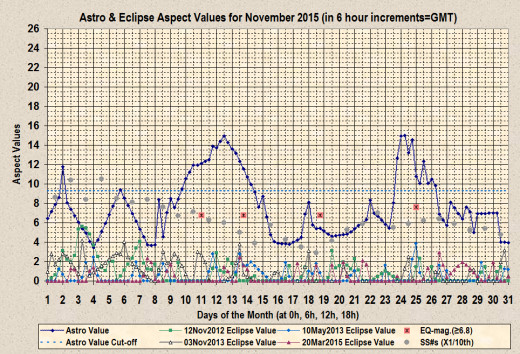
© 2015 Joseph Ritrovato


